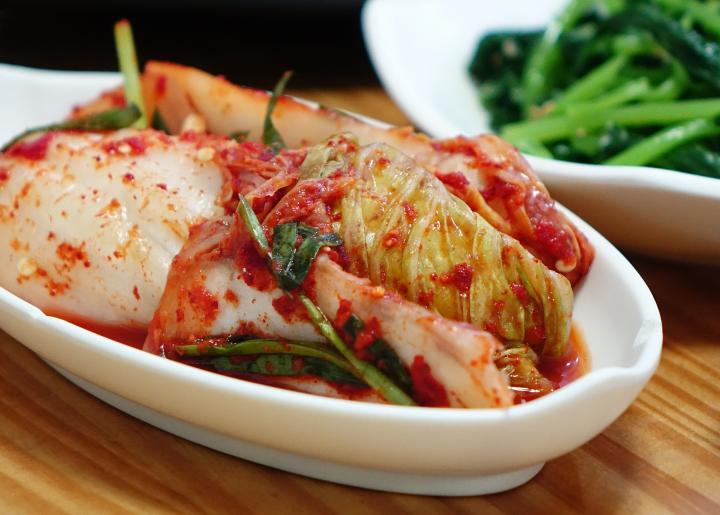Ever heard of kimchi? It’s a very flavorful, healthy, fermented dish made with vegetables. Here’s a bit about the benefits of fermented foods, as well as an easy kimchi recipe.
What are Fermented Foods?
Fermentation is an age-old culinary art experiencing a rebirth. Explore how to make delicious, healthy, nutrient- dense delicious foods through preservation.
In fermented foods, such as sauerkraut and kimchi, there are large amounts of enzymes that greatly aid the process of digestion. Our ancestors traditionally fermented their pickles, ketchups, and other vegetable products. These condiments, when served with cooked food, provided digestive enzymes to help the body assimilate them.
I learned about fermentation and nutrition over the years by studying it on my own. When I came across Sally Fallon (Morell)’s book, “Nourishing Traditions,” things really fell into place. She is fantastic about telling you what the different vitamins, fats, enzymes, etc. do in the body. Then, she describes—in over 600 pages—how to cook everything. For example, she says about enzymes…
“An important branch of twentieth-century nutritional research, running parallel to and equal in significance to the discovery of vitamins and minerals, has been the discovery of enzymes and their function. Enzymes are complex proteins that act as catalysts in almost every biochemical process that takes place in the body.”
What is Kimchi?
Kimchi is traditionally a fermented Korean dish made of vegetables and seasoning. It’s often hot and spicy but you can adjust the dish for a more mild taste, too.
I don’t have the tastebuds for the super-spicy red pepper powder used in Korean kimchi, I use crushed red pepper flakes or chili powder instead. Every fall, I ferment a batch or two as follows.

Easy Kimchi Recipe
This basic kimchi recipe yields approximately 2 quarts of tasty, spicy kimchi. Feel free to adjust the hotness for your own taste. Click here to see a printable version of this recipe.
Ingredients:
- 6 tablespoons salt
- 1 large head Napa cabbage
- 1/2 cup daikon radish, shredded or cut into matchsticks
- 6 scallions, thinly sliced
- 1 tablespoon minced ginger
- 1 tablespoon crushed red pepper flakes or chili powder
- 1 tablespoon minced garlic
- 10 cups water
Instructions:
In a bowl, dissolve 5 tablespoons of salt in 6 cups of water to make a brine. Set aside outer leaves from the cabbage. Cut the remaining head into quarters. Remove the core and cut the quarters crosswise to form 2-inch pieces called nabak. soak cabbage in brine for 8 to 10 hours, or overnight.
Drain and rinse cabbage. Discard brine.
Return cabbage to bowl and add radish, scallions, ginger, red pepper flakes, and garlic.
Stir to combine. Pack mixture tightly into a widemouth, 2-quart canning jar with a plastic lid (metal will corrode), leaving at least 2 inches of headspace. Fold and place reserved cabbage leaves on top of kimchi to hold it down.
Make a fresh brine from 1 tablespoon of salt dissolved in 4 cups of water. Pour enough fresh brine to cover cabbage, leaving 1 inch of headspace. Put on the lid, making it snug but not too tight, as some gas may need to escape. Place in a bowl or on a rimmed baking sheet and put in a cool place.
Let ferment for 7 days. Check daily to make sure cabbage is still submerged under brine. After a week, taste, then refrigerate when you find it to be satisfyingly tart and tangy.
Learn More
If you love this kimchee and would like to try other fermented recipes, check out our recipes for fermented mayonnaise and fruit kvass!











